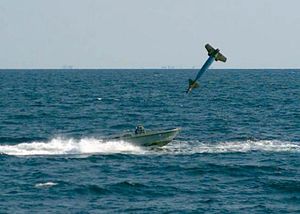It’s getting tough out there for small navies.
Large navies have always had (literally) big advantages over their smaller counterparts. A variety of dynamics worked to create emergent advantages for bigger forces. In naval engagements, larger forces could (generally speaking) take advantage of their numbers to an extent that ground forces could not. The well-known Lanchester Square Law suggests that, under admittedly stylized conditions, a larger force could destroy a smaller force without suffering equivalent casualties; the increased offensive firepower of the larger force quickly attrited the small force away.
Also, large navies also generally have access to shipbuilding and training advantages that small navies don’t. This is less true of land forces, where key tactical and operational concepts can be worked through on a smaller scale. Whereas in land and air combat small forces can achieve a level of professionalism exceeding that of their larger competitors, it’s hard to exercise against enemy destroyers and carriers when you have no carriers or destroyers available.
Of course, in practice local conditions limited the advantages of large forces, and small forces sometimes won the day. Crafted appropriately, small forces could threaten larger fleets with platforms and weapons (such as submarines, torpedo boats, and missile boats) that could threaten large ships. This role, of deterring a much larger force, has been part of the mission-kit of small navies for a very long time.
Modern naval warfare, on the other hand, appears to be moving toward a contest between two “systems-of-systems.” In stylized terms, this involves an A2/AD SoS fighting against an offensive SoS with a panoply of different weapons, including cruise missiles, ballistic missiles, surface ships, submarines, aircraft, and wide variety of electronic weapons and counter-measures. Success in this kind of combat depends on disrupting elements of the opponent’s SoS, and thus rendering the whole vulnerable to particular kinds of attack.
But only very large countries can afford all the relevant elements of either offensive or defensive SoSs. Small navies can certainly do okay on the defensive end, with elements of a full system (such as submarine launched cruise missiles) that can, in and of themselves, cause major problems for big navies. But if small navies can’t disrupt the offensive and defensive systems of larger forces, then the balance tips towards the more advanced, more fully capable SoSs. In concrete terms, big navies (particularly the USN, but increasingly the PLAN, the JMSDF, and others) can identify and target platforms from small navies before those boats even get into range.
If this trend develops, then even a robust anti-access system could become a luxury for wealthy states, rather than a capability affordable to all kinds of different countries. China could conceivably export cruise missiles and ballistic missiles that could target U.S. carriers, but it can’t really export all of the ancillary systems that make it possible to vector weapons to targets, and it can’t make packaged A2/AD systems sufficiently robust to avoid quick destruction by USN and USAF forces. Small navies may lose their historical “deter a big Navy” function, and instead have to concentrate on other traditional functions, such as sea control, contribution to coalition warfare, and competition against like-sized forces.

































